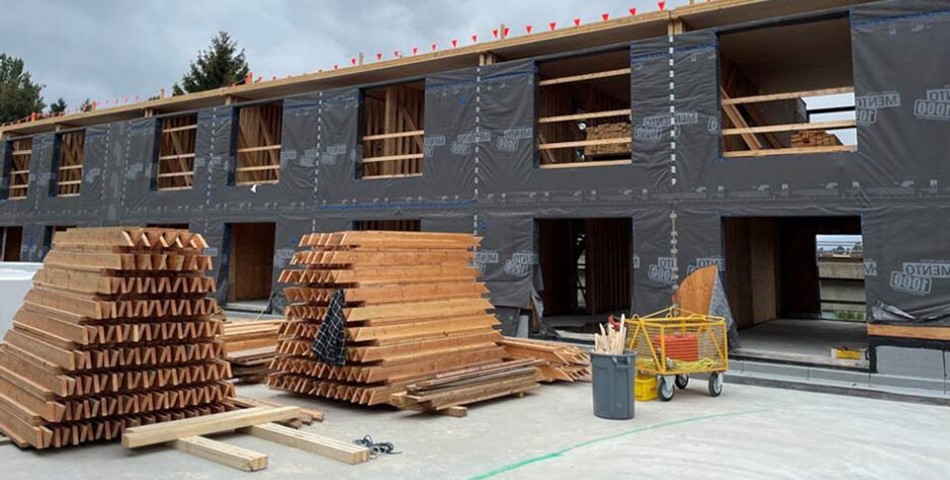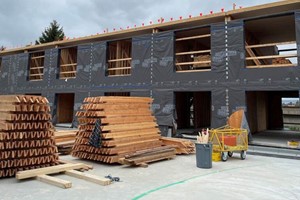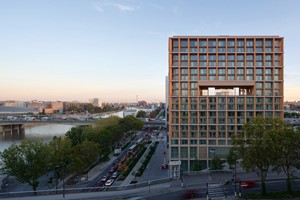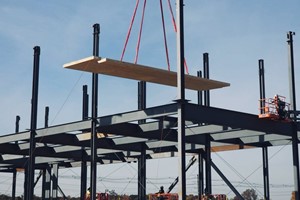Canada’s growing population and shifting demographics have led to an urgent demand for housing that significantly outpaces current construction efforts. Increasing material costs, regulatory challenges, and labor shortages across various regions in Canada have further compounded the difficulty of meeting this demand. To overcome these obstacles, innovative construction methods are becoming increasingly necessary. One such solution, according to Rory Koska, executive director of WoodWorks Alberta, is the integration of prefabricated wood-based systems into modern construction practices.
Prefabrication: A Path to Efficiency and Sustainability
Koska highlights the advantages of prefabrication, stating that wood-based systems are inherently well-suited to offsite manufacturing. This approach offers numerous benefits, including reduced material waste, increased efficiency, and shorter on-site construction timelines. The use of factory-built solutions, which optimize both labor and materials, presents a compelling way forward in addressing the housing crisis. By accelerating the construction process and offering lower-carbon alternatives, prefabricated wood solutions have the potential to significantly impact the delivery of much-needed housing and infrastructure across the country.
The Role of Mass Timber in Hybrid Construction
Central to this innovative approach is the increased adoption of mass timber products, such as cross-laminated timber (CLT), glue-laminated timber (GLT), nail-laminated timber (NLT), and dowel-laminated timber (DLT). These advanced products are transforming the construction landscape by offering versatile, high-performance structural solutions tailored to meet specific project needs. When combined with other materials or construction methods, mass timber enables developers to create flexible, efficient buildings that can address housing shortages while maintaining environmental sustainability.
Hybrid Systems: Optimizing Structural Performance
Hybrid construction systems are playing a key role in modern building projects, especially those that combine mass timber with other materials. Although steel, wood, and concrete are often used together, a growing number of projects are finding strategic efficiencies by using a mostly wood-based hybrid system. These systems blend light wood frame construction—often in panelized forms—with mass timber components to deliver high-performance buildings faster and with fewer complexities than traditional construction.
One notable example of this is the Red Deer Polytechnic Student Residence project in Alberta. The five-storey building uses GLT posts, beams, and panels for its structural frame, floors, and roof, while dimensional lumber is used for load-bearing walls and partitions. The project also incorporates steel in the first-storey skeleton, supporting a GLT transfer slab. The hybrid approach was chosen for its cost-effectiveness and construction speed, according to Vedran Škopac, principal at Reimagine Architects. He emphasizes the minimized beam depth and optimized costs achieved through this design, as well as its positive impact on construction timelines and service installations.
Environmental and Economic Benefits of Prefabricated Wood Systems
In Vancouver, another hybrid project, the Vienna House, utilizes CLT panels combined with light wood frame construction. This rental apartment community is designed with near zero-emissions goals and includes 123 units for a range of income levels. The prefabricated CLT panels offer enhanced seismic stability—an important consideration for projects in higher-risk earthquake zones—and reduce on-site labor, construction noise, and community disruptions. Devin Harding from Kalesnikoff, the company responsible for manufacturing the CLT components, praises the aesthetic appeal of exposed mass timber and notes the improved precision and stability in the project’s construction.
Strategic Advantages of Hybrid Timber Systems
The success of both the Red Deer and Vienna House projects demonstrates the potential of hybrid timber construction in addressing Canada’s housing challenges. By combining the strengths of light wood frame and mass timber systems, these projects have achieved faster construction times, lower costs, and reduced environmental impacts. Additionally, the use of prefabricated components allows for greater precision in construction and helps streamline the planning and digitization of projects.
Though there is no universal solution to the housing crisis, the versatility of hybrid timber systems offers developers a powerful tool to create sustainable, efficient, and high-performance buildings. With continued innovation in mass timber products like NLT and DLT, and the growing use of prefabricated light frame solutions, Canada can meet its housing needs while maintaining a strong commitment to environmental and economic efficiency.
by Sarah Hicks














